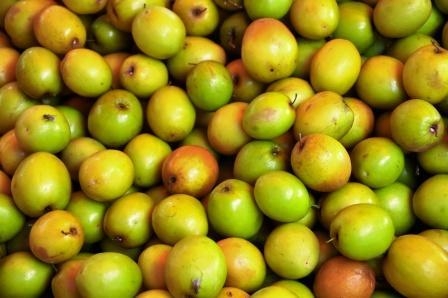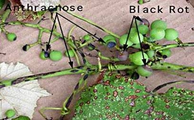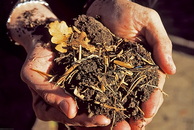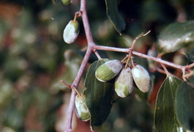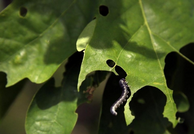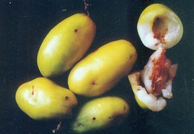Gola: Fruits are round in shapes which are golden yellow in color, soft flesh, less succulent, gives an average yield of 125kg per tree.
Muriya murhara: Egg shaped fruit, pointed upper part and wide lower part, soft flesh which is sweet in taste, gives an average yield of 125kg per tree.
Sanaur-5: Round shape large fruit, pointed lower part, golden yellow color flesh, sweet, 19% T.S.S content, matures in second fortnight of March, and gives an average yield of 150kg per tree.
Other state varieties
Seb: It has an average weight of 14gms. It gives an average yield of 80 kg/tree. It contains 20.7% soluble solids, 85mg/100gm of Vitamin C and 44% of acidic content. The fruits get mature in last week of January.
Mundia: It has bell shaped fruits which gets yellow in color at maturity. It contains 18.5% soluble solids, 90.7mg/100gm of Vitamin C and 29% of acidic content. It gives an average yield of 125 kg/tree.
Umran: Fruits are of oval shape with smooth and glossy skin. Fruits are of golden yellow color and on maturity it changes to chocolate brown. Gets mature in March end to Mid-April. Gives average yield of 150-200 kg per tree.
Kaithli: Fruits are of medium size, oblong, with smooth skin and of greenish yellow color. Ready to harvest in March end. Fruits are of sweet in test. It gives average yield of 75 kg per tree. Get affected with powdery mildew disease.
ZG 2: Trees are of spreading type. Fruits are of medium size, oblong and of bright green color on ripening. Sweet in test. It is resistive to powdery mildew disease. Ready to harvest in March End. It gives average yield of 150 kg per tree.
Wallaiti: Medium to large size fruits with oval shape. On maturity, color of fruit changes to golden yellow color. Pulp is soft with TSS from 13.8 to 15%. It gives average yield of 114 kg fruits per tree.
Sanaur 2: Fruits are of large size, skin is smooth with golden yellow color. Sweet in test having TSS 19%. Resistant to powdery mildew. Ready to harvest in second fortnight of March. It gives average yield of 150 kg per tree.
Banarasi Kadaka, Mehrun, Parbhani, Elaichi, Sanam 5.

